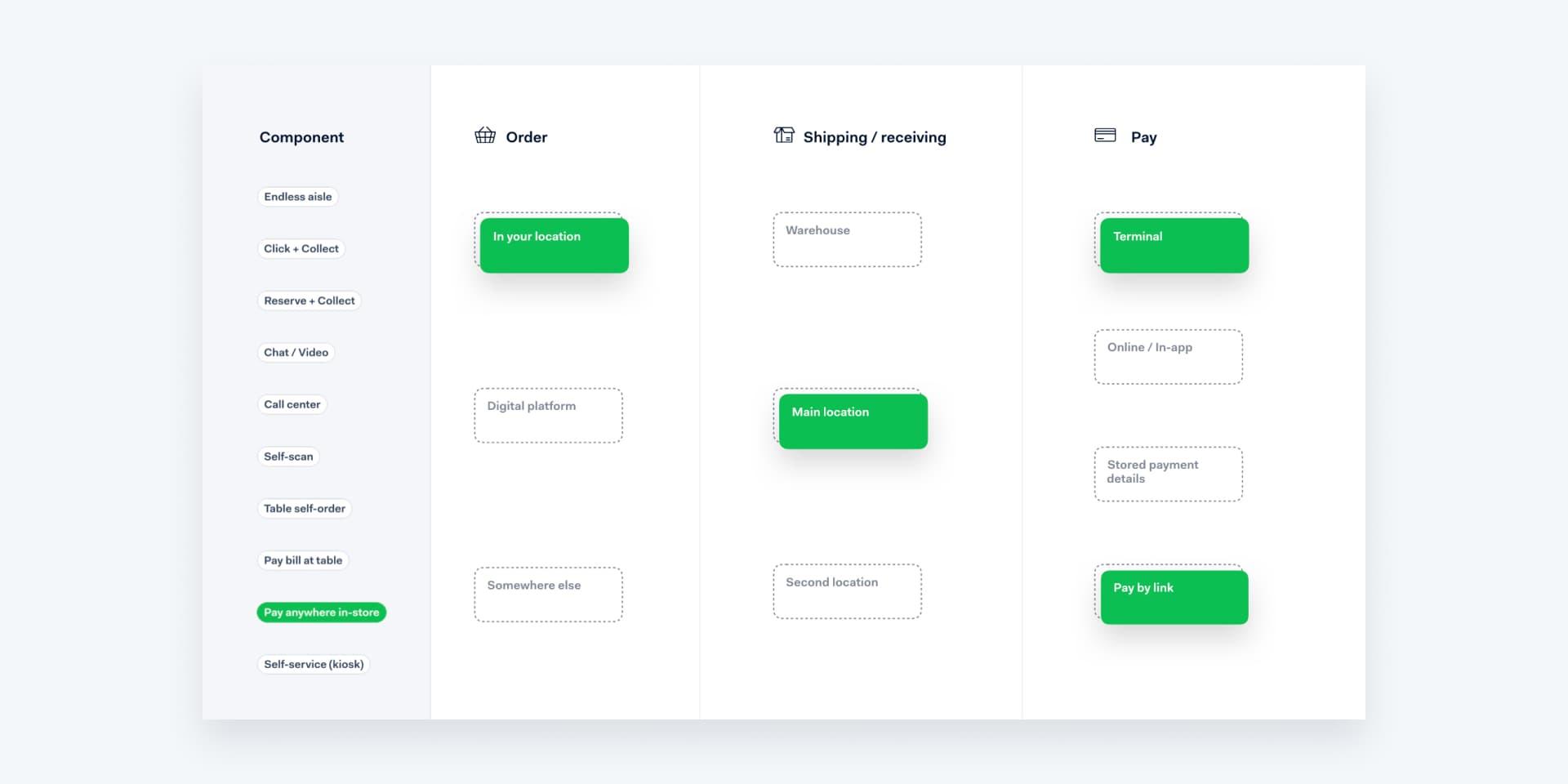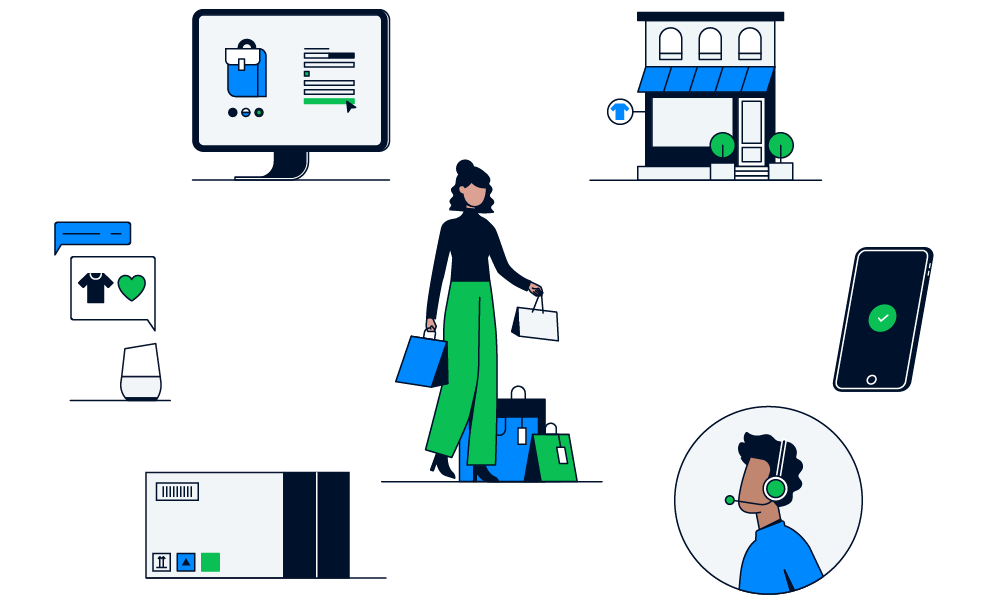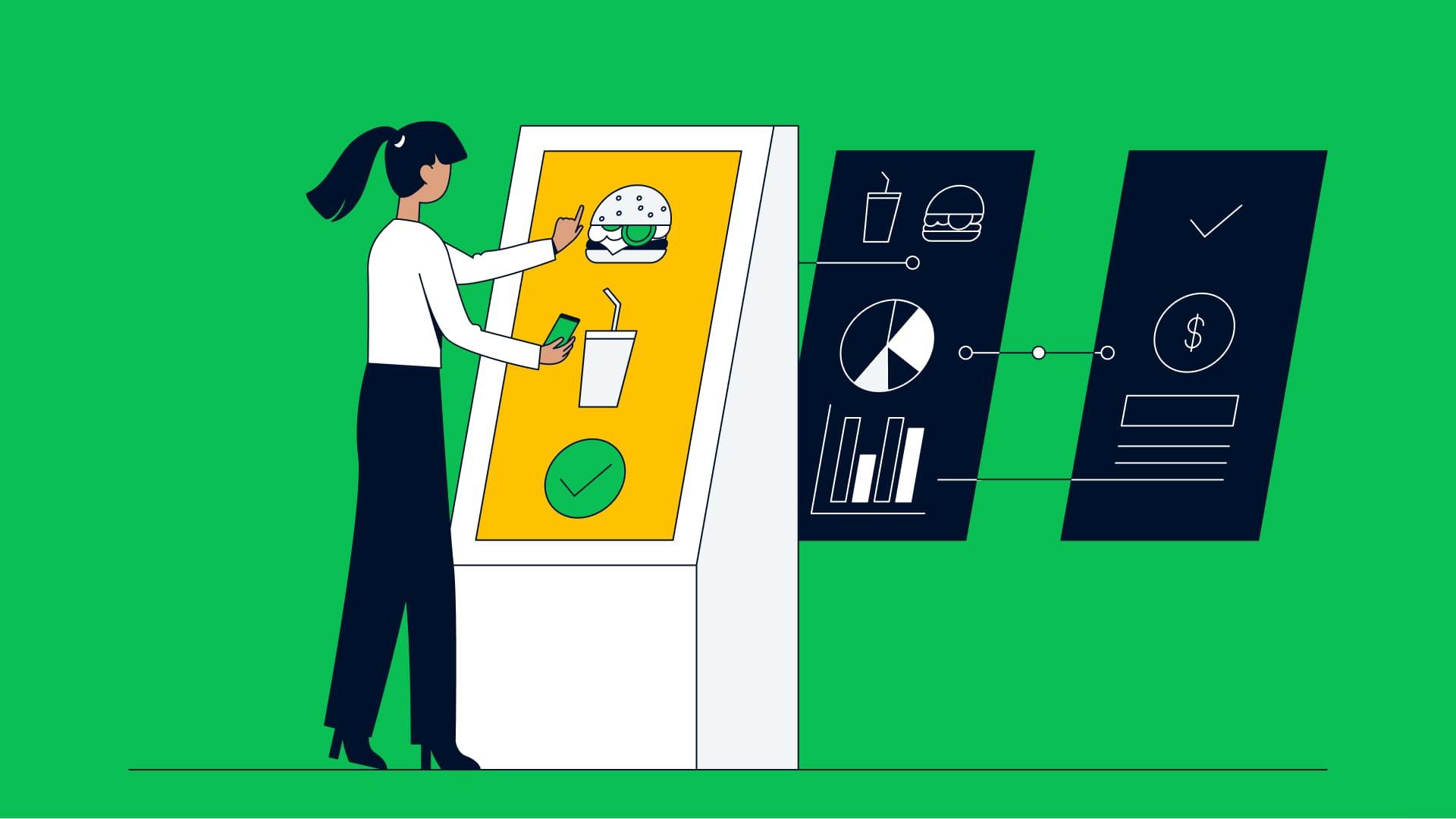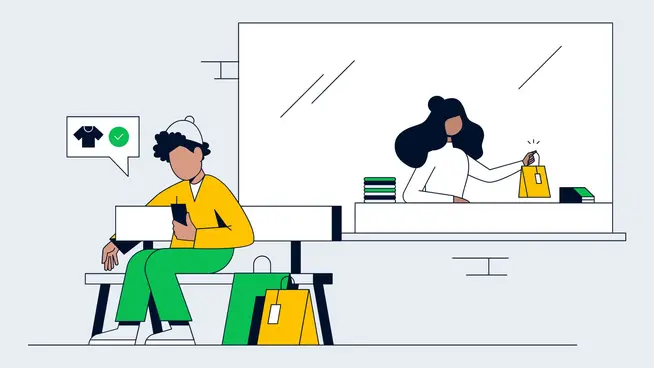Guides and reports
Unified commerce: The practical guide
Discover how payments can power unified commerce with examples from Bonobos, Joe & the Juice, Superdry, and McDonald’s.
The COVID-19 pandemic accelerated many changes in consumer behaviour, from online shopping, to curbside pick-up, and QR code table orders. Businesses that have adapted to meet these needs have inadvertently set a new standard that consumers now expect them to uphold. More than ever, it’s important to provide a consistent experience to customers, wherever they are.
According to ourlatest retail report, 61% of consumers expect brands to continue selling across multiple channels. The report also underlines the importance of delivering a great experience from the start since 70% won’t return if they have a bad time in your store or on your website.
Unified commerce increases businesses’ performance by 9%.
Unified commerce is a powerful tool to improve your customer experience and increase your resilience. 51% of businesses say online stores were able to offset the losses at physical stores during the pandemic, while 47% say a benefit of unified commerce is improved customer experience.
What do we mean by unified commerce?
Unified commerce is essentially one step up from omnichannel. Omnichannel businesses are already delivering great cross-channel experiences to their customers. But systems behind the scenes are often unconnected. With unified commerce, you have a single view of your stock, your customers, and your payments. This allows for greater flexibility for your customers and better insights for you. It also keeps you agile since you can add new channels and support new customer journeys quickly because everything’s connected.You can learn more about unified commerce here >
But what does unified commerce look like in practice?
This article will walk you through a few examples to illustrate how unified commerce can be applied practically and explore how a single payments platform can help.
Unified commerce brought to you by payments
A single payments platform paves the way to truly connected sales channels. This is because all your payments feed into the same system, so it no longer matters whether a customer buys online, in-app, in store, or a combination of all three. Your customers are free to dictate their experience, and you benefit from a centralised overview of their activity.
The chart below illustrates our approach to unified commerce. Essentially it’s a series of building blocks that can be mixed and matched to create smooth experiences across different touchpoints.
Some definitions:
- Order: Where (in terms of sales channel) a customer places their order. This could be at home, on the move, or in-person.
- Receive: Where the good or service comes from or is returned to. This could be a store, a warehouse, or a combination of the two.
- Pay: How payment is taken. This could be online, in-app, in-store, or via a payment link shared by text or email.

“It’s important to give customers total flexibility. They can pre-order in-app, they can order in store, and they can choose to pay via the terminal or in-app. It really doesn't matter.”
So, what does all this look like in practice? Below are three applications of unified commerce in action:
1. Increased customer flexibility

Consumer behaviour has undergone a seismic shift in recent years. In many ways, life used to be more prescriptive. You’d leave your home at 8.00 am to be in the office at 9.00, grabbing a coffee en route. During your lunch break, you may do some shopping. You’d either return to your desk with your purchase or empty-handed because what you were looking for wasn’t in stock. Perhaps on the way home, you’d swing by another store on the off-chance the item was there.
Even before the pandemic, technology had unshackled us from the restrictions of these traditional shopping experiences. We were already shopping on our phones, and an item being out of stock was no longer the end of the story. Now, since so many more of us are working from home and shopping online, these trends have picked up speed. Brands are embracing experiences that span online and offline channels to provide a better experience.
Superdry, for example, was keen to eliminate lost sales caused by out-of-stock issues. It equipped its staff with iPads, giving in-store shoppers access to their whole online inventory. They can order additional colours or sizes and have them shipped to their home. The payment is then taken via a mobile terminal, which is connected to the iPad via bluetooth.
In another example, McDonald’s lets customers skip the queue by browsing items, placing orders, and redeeming promotions via its app. Once the items have been added to the basket, customers can choose their payment method (such as credit card or Apple Pay). If they’re in a McDonald’s store, they just need to check-in and show their reference number to the cashier.
And finally, in a move to offer a luxury customer service remotely, Watches of Switzerland has implemented a video consultation service which is booked via its website. If the customer wishes to make a purchase, the sales associate pastes a secure payment link into the chat window, and the sale is completed then and there.
"Pay by Link is a simple way of catering to VIPs elegantly and securely. Adyen's out-of-the-box pages are easily branded, and they look great. It was also incredibly easy to set-up, and we were live within two weeks."
2. Better customer loyalty

During times of uncertainty, customer loyalty becomes ever-more important.
A key driver of loyalty is loyalty programs, but it can be tricky to get them right. For, although 61% of consumers say they’ll download a brand’s app to receive better rewards, 64% feel that loyalty programs need improvement. This is likely because they require too much effort and it’s tiresome to have a wallet clogged up with loyalty cards: 70% of consumers feel retailers should use technology to make their programs easier and more effective.
Payment-linked loyalty
One solution is to connect your loyalty program to your customer’s payment card, a move that would be welcomed by 63% of consumers who’d love brands to implement payment-linked loyalty. This can only be achieved, however, if your payment data is connected.
44% of businesses say a benefit of unified commerce is increased customer loyalty.
A typical payment set-up involves multiple providers, from gateway to acquirer to local point of sale providers and risk management solutions. With so many parties, each with their own data and reporting set-ups, it’s impossible to build a complete picture of your customers.
In comparison, the Adyen platform was built to manage every payment from start to finish. Data is captured and held in one place. This makes it easy to track customer behaviour and assign loyalty points, whether they’re buying online in Singapore or in a store in New York. We do this with tokenization, which attributes a unique shopper reference number to the payment card. This is captured during an initial purchase and used to connect subsequent purchases to the same customer.
“Customers want you to have a better sense of who they are."
For men’s clothing retailer Bonobos, the ability to recognise customers across channels is critical to its business, as Chief Experience Officer Dominique Essig explained:
“Customers want you to have a better sense of who they are. What are they doing online? Offline? How do we marry those together? How do you empower sales associates to have a deeper interaction in the store? Adyen helps us think more clearly about whatever journey the customer has taken — who they are, what they want — and leverage their profile across devices.”
3. Connected data to power growth

If 2020 taught us anything, it’s that agility is essential. Businesses have to be able to respond fast and pivot if necessary. But it’s a lot harder to do if your operations are scattered across multiple systems and channels. Each one needs updating in turn, and older systems might not be compatible with the changes.
But if your payments are centralised, it’s much easier to expand to another sales channel. You can furnish remote sales associates with secure payment links to share with customers via email or chat windows. And, critically, you gather all your payment data into one place. This makes life a lot easier for your finance teams since they’ll benefit from consolidated reporting.
Joe & The Juice, for example, was well placed to pivot quickly during the initial pandemic peak, as VP of Strategy & Business Development Thomas Elvald explained:
“Our previous investment in our pre-order app paid off ten-fold during the initial lockdown period. We were one of the only UK chains to remain open, going from 10% to 100% digital sales. The pandemic helped to accelerate the adoption of the app, which in turn accelerated our digital transformation.”
It’s also had the knock-on effect that the app has now become a fundamental part of the customer experience. It lets them move seamlessly between online and offline, collecting reward points as they go. And, since everything is connected in the backend, it’s easy to reconcile payments, regardless of where they were made.
Making magic behind the scenes
The best technology partners are the ones that work quietly behind the scenes to create magical moments for your customers while keeping you one-step-ahead. That’s why we created a single payments platform that spans all channels and regions for truly unified commerce. It makes it easy to provide flexibility to your customers, build a deep understanding of their preferences, and remain agile.
"We are a satisfied partner of Adyen, not only for their technological excellence and their constant innovation, which anticipates the needs of the market, but also for the human qualities of the teams."
